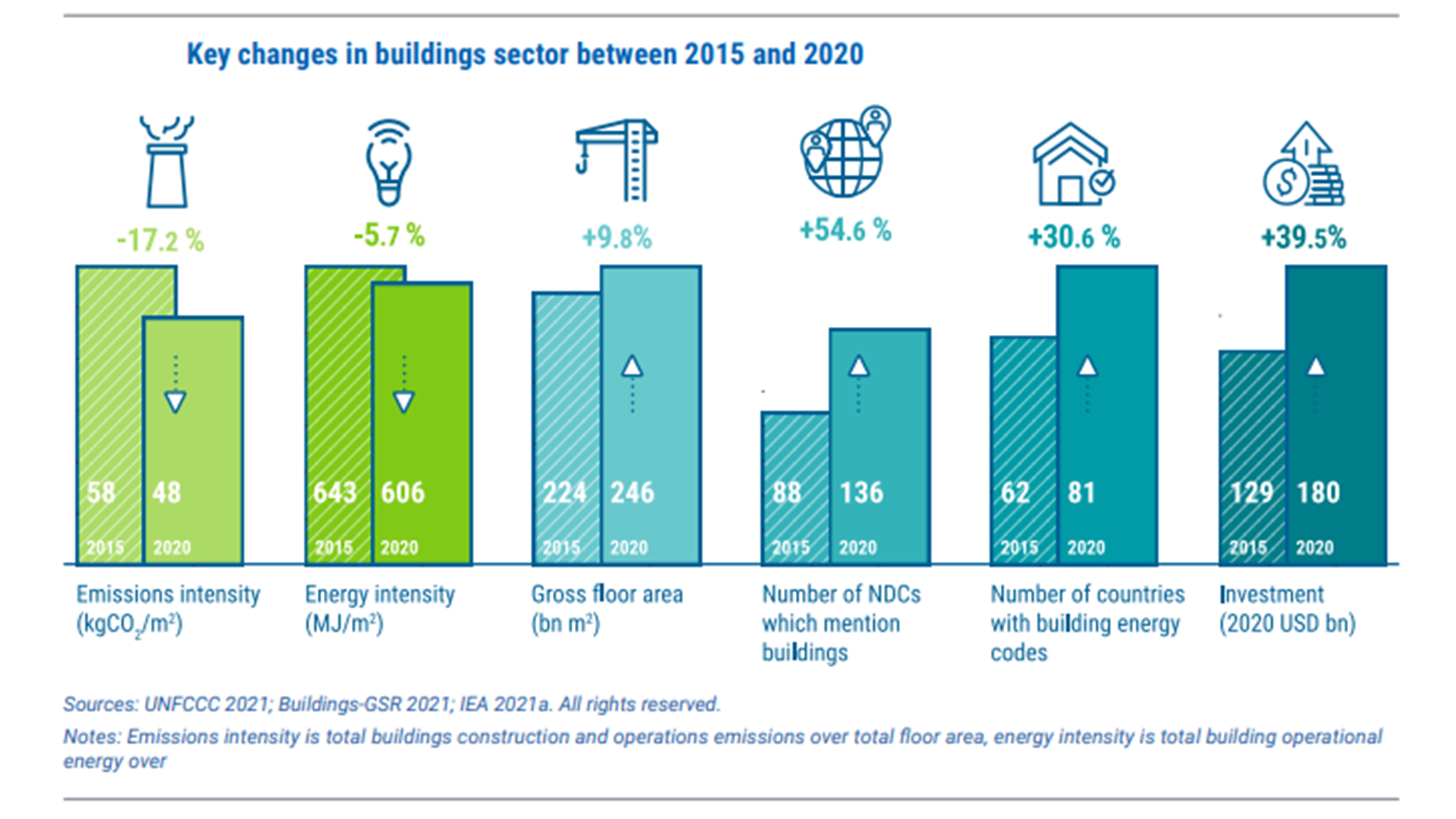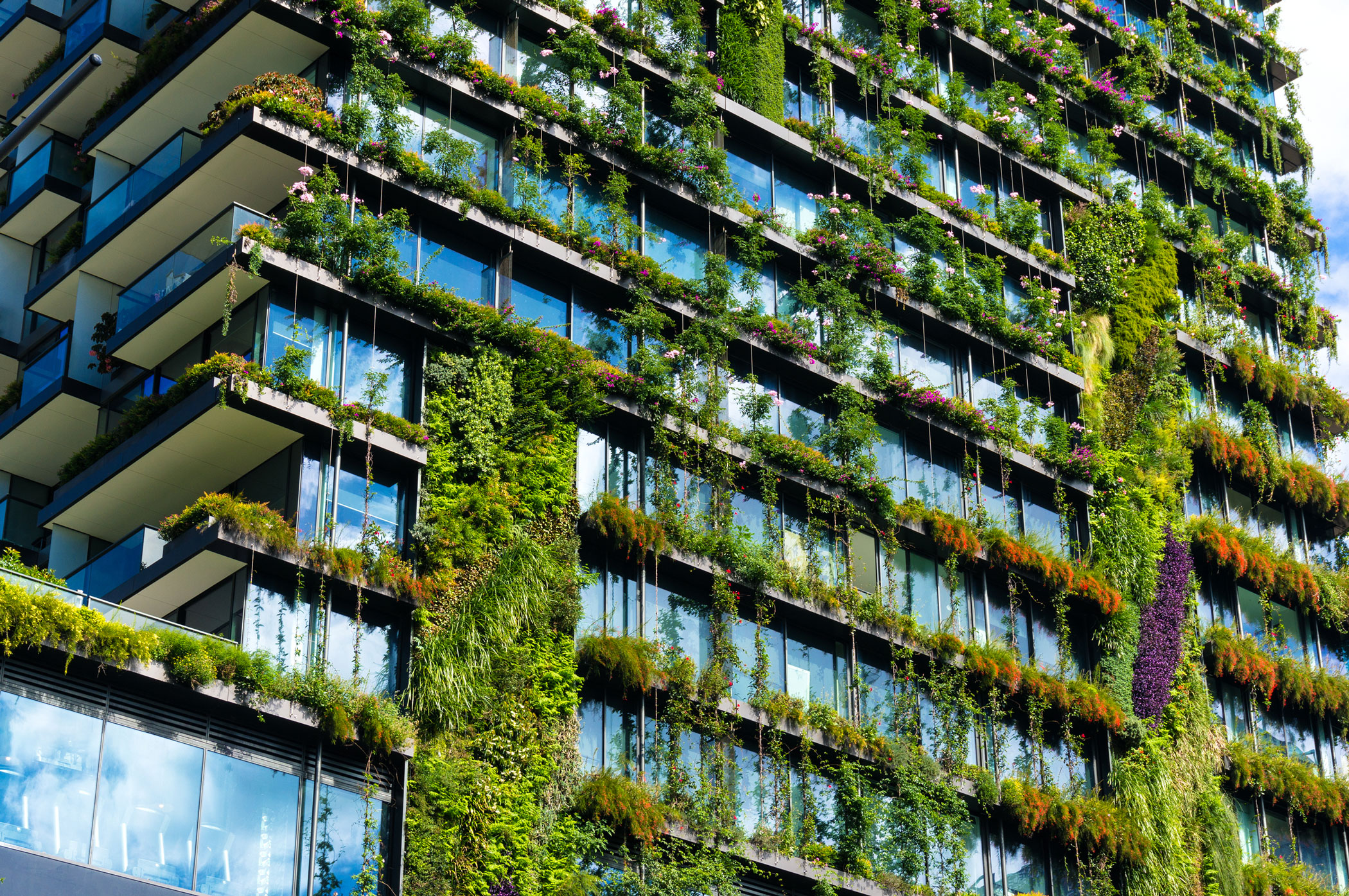November 11, the last day of negotiations, will be dedicated
to cities, regions and the built environment.
But what’s the data that will lead these negotiations?
UNEP’s (United Nations Environment Program) “2021 Global
Status Report for Buildings and Constructions” presents how and to what extent
buildings contribute to the fight against climate change, as well as the
sector's global progress in climate action.
There has been real progress
According to the report, the industry accounted for 36% of
global energy final consumption and 37% of energy-related CO2 emissions. A
significant 10% drop was observed in emissions related to the operation of
buildings, but this is mostly attributed to the COVID-19 crisis.
However, the report confirms that there have indeed been
improvements. Since 2015, when the Paris Agreement was signed, the inclusion of
buildings in Nationally Determined Contributions (NDCs), which represent
countries' "voluntary" commitments to reduce their emissions, has
increased from 90 to 136 countries. In addition, 80 countries have developed
building codes, compared to 62 countries in 2015.
Investments in the energy efficiency of buildings have increased by 40% since 2015. Only this year, and despite the special conditions faced by the markets, there is a global increase in energy efficiency investments in the building sector by 11%, reaching approximately $ 184 billion.

On the other hand…
However, two-thirds of the countries where the construction sector is expected to grow, mainly in Africa and Asia, still do not apply mandatory building codes.
Most of the increase in energy efficiency investments came from a small number of European countries, motivated by European policies and funding.
In addition, there is a lack of ambitious carbon targets in the Nationally Determined Contributions as a whole.
In the end, are we on the right track?
Despite the decline in emissions, construction demand is expected to return with higher emissions as the building activity recovers. Global material use is expected to more than double by 2060, with one third of this increase attributed to materials used in building and construction.
Coming years are crucial for the building stock and infrastructure, concludes UNEP Executive Director Inger Andersen. " The next five years will be about widely adopting transformational approaches. It will be about collaborating through platforms such as the Global Alliance for Buildings and Construction. It will be about putting in place incentives and regulations that can take those solutions to the scale needed. "
Some European countries have already developed policies to reduce carbon emissions related to the built environment, not only during use but also during the construction of buildings. Even more initiatives are expected from the EU in the near future, through the Renovation Wave, but also through financial instruments, such as the Recovery Fund and InvestEU.
However, UNEP reckons that in order to reach the Paris Agreement, buildings and the global construction sector must be almost completely decarbonized by 2050. European policies, even if they are a complete success, are not enough to meet the requirements regarding the built environment worldwide.
At this critical juncture, the negotiations taking place in COP 26 can make a decisive contribution to the future of the building stock.















